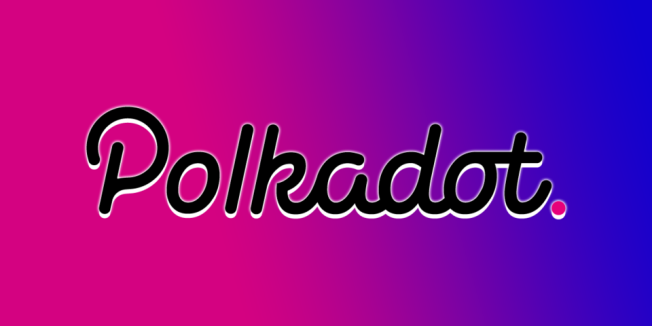
Polkadot or DOT coins (collectively "DOT"), like other cryptocurrencies, are tokens that can be bought and sold on exchanges such as Coinbase and Kraken. More importantly, it is a decentralized protocol that connects different blockchains that have previously operated independently. Therefore, Polkadot is one of the blockchains that aims to develop the cryptocurrency ecosystem. Other notable examples include Ethereum, Cosmos and EOSIO.
As regulators increasingly focus on the actual "utility" of cryptocurrencies, this article explores the potential of Polkadot and whether it can replace Bitcoin and Ethereum in the future.
What is Polkadot? What's unique about it?
Polkadot was developed in 2016 by Gavin Wood, the co-founder of Ethereum, as well as Peter Czaban and Robert Habermeier. It is designed to allow users to transfer value and data between different blockchains (such as Bitcoin and Ethereum), flowing securely between different networks without middlemen. Polkadot is also fast and scalable by using a large number of parallel blockchains (or "side chains") to offload most of the processing needs of the main blockchain. Polkadot can even be used to connect to non-blockchain databases.
In view of this unique and innovative functionality, DOT is hailed as an important example of the advanced technology of Web 3.0, representing the next generation or stage of network/Internet development. Web 3.0, built on core concepts such as decentralization, openness, and greater user functionality (such as blockchain), may be as disruptive as Web 2.0 and represent a major paradigm shift.
Polkadot consists of two types of blockchains: the first type is the main network for permanent transactions, called the main chain (relay chain), and the second type is the network established by users (i.e., side chains). Sidechains can be customized for a variety of purposes, and sidechain transactions enjoy the same network security as the main chain.
Polkadot is able to handle such a large amount of data because many side chains share a lot of heavy work with the main chain. In order to achieve higher speed, the main chain separates the work of adding new transactions and verifying new transactions. As a result, the Polkadot network can handle more than 1,000 transactions per second, while Bitcoin and Ethereum can only handle 7 and 30 transactions per second respectively. As the network develops and sidechains are added, Polkadot should become even faster, reaching 1 million transactions per second.
In addition, the industry is building bridges to connect different blockchains (such as EOSIO, Cosmos, Ethereum and Bitcoin) so that tokens can be interchanged without the need for a central exchange. The Securities and Futures Commission ("SFC") recently announced that central exchanges will be included in its regulatory scope, and DOT does not need a central exchange, which means it does not need to be regulated.
After two DOT cryptocurrency sales, Polkadot has now raised approximately $200 million from investors, making it one of the most well-funded blockchain projects in history.
Proof of Holding Model: Holder
Polkadot uses a proof-of-holding consensus mechanism (rather than the proof-of-work mechanism used by Bitcoin) to ensure network security, verify transactions, and mint and distribute new DOT tokens. This system allows anyone who holds DOT to perform multiple roles required for its operation by locking DOT in a special contract:
Validator: Verify the data in sidechain blocks and participate in discussions and votes on proposed network changes.
Nominators: Ensure the security of the main chain by selecting trusted verifiers. They delegate the DOT tokens they hold to validators, thereby allocating votes to them.
Collator: Operates the node that stores the complete records of the side chain, integrates the transaction data of the side chain into blocks, and then adds them to the main chain.
Fishermen: Monitor the Polkadot network and report bad behavior to validators.
Users who hold DOT and perform the above roles are also eligible to receive DOT rewards.
Management of Polkadot
Three categories of Polkadot users can influence the development of this software:
DOT holders: Anyone who purchases DOT tokens can propose changes to the network and approve or reject major changes proposed by others.
Council: Council members are elected by DOT holders. They are responsible for proposing changes and deciding which changes proposed by DOT holders are implemented into the software. Compared to ordinary DOT holders, council member proposals require fewer votes to be approved.
Technical Committee: Composed of several teams actively building Polkadot and can make special recommendations in emergencies. Members of the Technical Committee are elected by a vote of the Board of Directors.
The potential of Polkadot
The potential of Polkadot is unlimited, because it can bring together the power of many blockchains and can handle far more transactions than Bitcoin, Ethereum, etc. Polkadot is expected to unify various cryptocurrencies in the foreseeable future, allowing different cryptocurrencies to be interchangeable without the need for a central exchange.
Therefore, when the China Securities Regulatory Commission finally brings centralized virtual asset service providers into its regulatory scope, the DOT ecosystem may choose not to be regulated. Those who support decentralization may eventually find that DOT is a better asset to trade with than Bitcoin or Ethereum.
In addition, Polkadot’s management system is mature and all stakeholders have a say. Network upgrades are coordinated on-chain and independently promulgated, ensuring that the development of Polkadot reflects the value orientation of the community and avoids stagnation.
Nonetheless, the legal landscape for Polkadot and other cryptocurrencies continues to evolve, and authorities may enact regulations to regulate transactions involving cryptocurrencies. However, the current regulatory focus is of course focused on traditional cryptocurrencies such as Bitcoin and Ethereum.
Businesses interested in capitalizing on the vast potential of DOT and other cryptocurrencies should seek legal advice on how best to draft/prepare their smart contracts, taking into account the possible legal consequences of their proposed transactions, and understand the best options to protect their rights. Best practices.